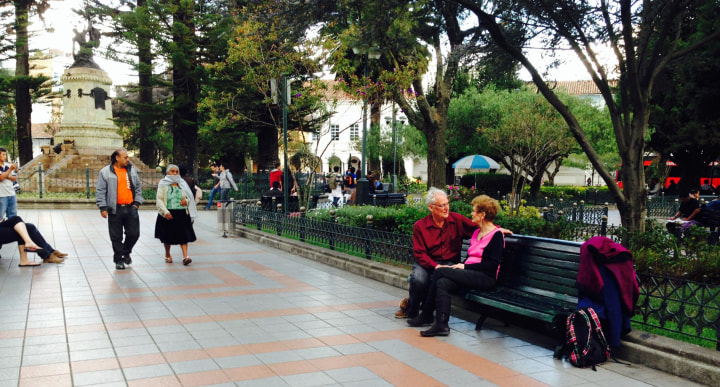After Bob and Diane Hall of St. Paul retired in 2008, they, like so many other Minnesotans, moved to the Southwest.
"We decided to get out of the cold and go warm," Diane says.
But the warmth in Nevada and then Arizona was too warm.
"We hated the heat," Diane says. "So we needed a new adventure."
Surprisingly, the Economist magazine provided one.
"Bob read an article in the Economist, a little blurb about Ecuador and how so many ex-pats were moving there," Diane says. "He was reading it to me, and I said, 'Oh, yeah!' I sent him there to do an exploratory trip. He absolutely loved it. I knew if he liked it, I'd like it."
That was about two years ago. Since then, the couple studied up on this South American country.
"The country is about the size of the state of Nevada, so it's pretty small," Diane says. "Part of it is on the Pacific Ocean, and it borders Peru and Colombia."
It also took some time to reassure the kids.
"They all thought we were crazy at first," Diane says. "But they haven't stayed around, either. I have one son in Vegas and one daughter in the Netherlands."
So, after fulfilling some teaching obligations, undergoing orthopedic surgery, selling their house and paring down their belongings, the couple moved to Cuenca,
Ecuador, on June 1.
So far, so good -- especially the weather.
"We're just coming out of winter time right now," Diane says. "I think it's going to be 69 degrees today. In December, it gets up to 75 or 78."
It's also affordable: The couple rents a three-bedroom, furnished apartment in an upscale building for $650 a month.
"Our water and telephone bill totaled $12," Bob says. "Electricity was $10.50."
Bob, 76, a retired researcher and professor, and Diane, 69, a retired respiratory therapist, also find they get a lot of respect in their adopted country.
"People here, they really revere the elderly," Diane says. "Being over 65, almost everything is half price for us. The bus fare, typically a quarter, is 12.5 cents for those older than 65. Even airfare is half price, if the flight originates in Ecuador."
Converting to a different economy has been easy for these Americans.
"Ecuador switched to American currency after problems with their own currency," Bob says.
The people, though, are what make this place feel like home.
"Strangers will greet you," Bob says. "I was at an open-air market that sells fresh fruit and vegetables -- so fresh and no pesticides used -- when a lady came up to me and said, 'Thank you for coming down here.' I thought she was mistaking me for someone else. But she wasn't. She just meant, 'Thank you for coming down and seeing what it's like to live in our country.' "
Spanish is required, though.
"Very few people speak English," Bob says.
"We're taking Spanish lessons," says Diane.
The couple plan to stay in Ecuador indefinitely.
"Do we miss Minnesota?" asks Diane.
Long pause.
"I miss Cossetta's pizza," she said, finally.
Bob sees it differently.
"Down here," he says, "there are no mosquitos!"
To follow Diane and Bob Hall's Ecuadorian adventures, go to
ecuadorfinally.blogspot.com.
Molly Guthrey can be reached at 651-228-5505.















 AMBER PAYNE / NBC NEWS
AMBER PAYNE / NBC NEWS COURTESY TRAVELZOO
COURTESY TRAVELZOO AMBER PAYNE / NBC NEWS
AMBER PAYNE / NBC NEWS